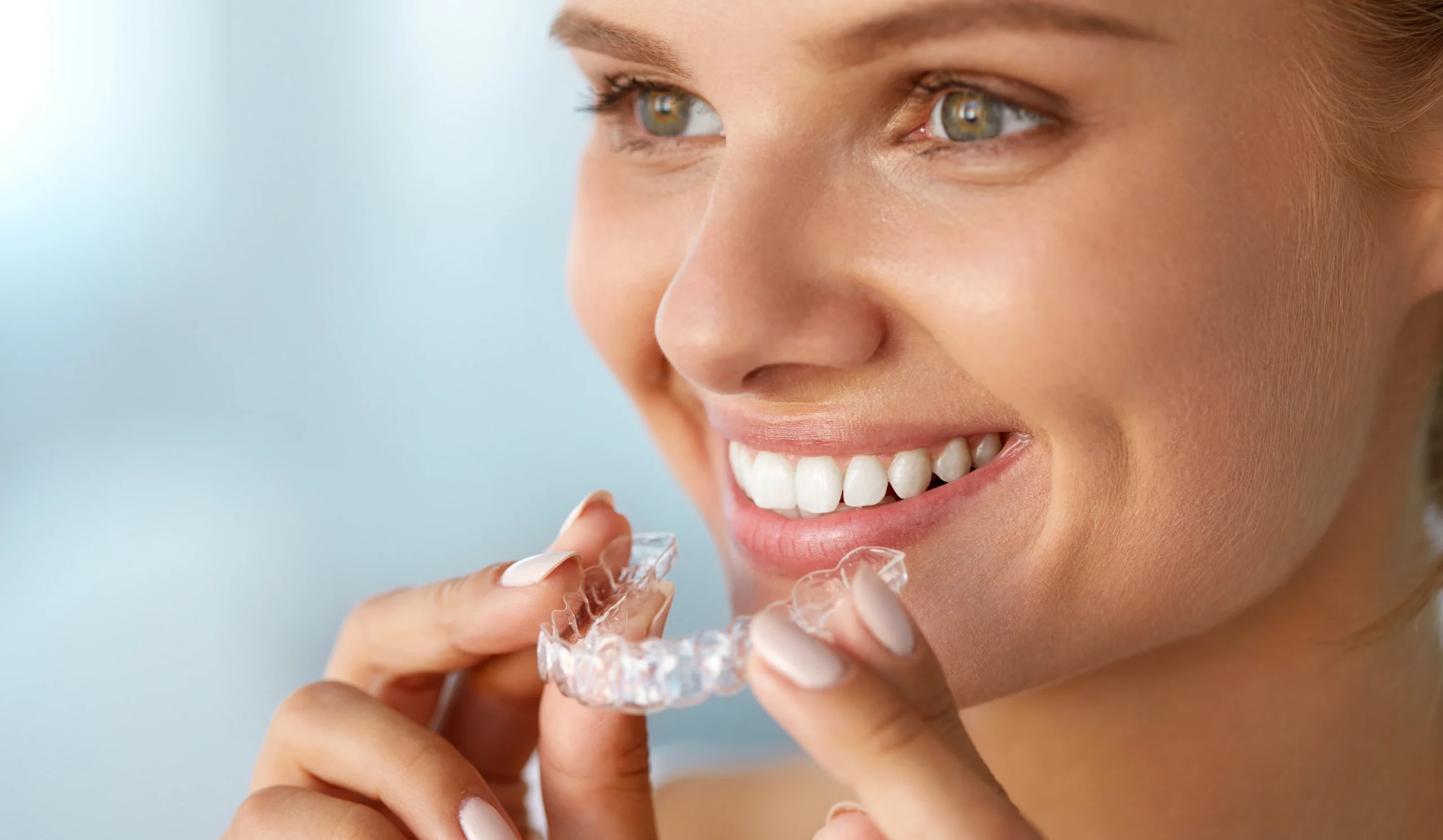Top things to do before you get braces
These tips will help you feel prepared and ensure you get the best result for yourself and your smile. Don’t forget to ask us any questions you may have during your consultation, we recommend writing down a list of questions or concerns before the appointment and feel free to ask us any questions you like. Remember we are here to service you.

Preparing for braces
It is imperative that the teeth are healthy before starting orthodontic treatment. We may suggest seeing your own dentist or one of our own dentists for a check up and/or hygienist for a cleaning to ensure there are no cavities or gum disease prior to starting. It’s important we move healthy teeth otherwise moving teeth with active infection may lead to worsening of dental health, more discomfort or ceasing orthodontic treatment until the health issues are addressed.
Also, be sure to thoroughly brush your teeth and floss in the lead up to your appointment so that your teeth and gums are in the best possible condition on the day your braces are applied.

What foods should you avoid with braces?
Some foods are not good for braces. They can pop brackets and bend wires, which will lead to unexpected trips to the office. Please:
- Avoid biting your nails or chewing on ice.
- For hard healthy foods like apples, carrots, hard crust pizza, please cut them up into small bite size pieces. Biting a whole apple and tearing it away from your teeth puts a lot of strain on the braces.
- Avoid bubble or chewing gum that contains sugar. The very occasional sugar-free chewing gum is acceptable as this promotes saliva flow to flush food/bacteria between the braces.
- Careful when biting into popcorn. As unsuspecting kernel seed can easily break the braces.
- Please avoid or reserve for special occasions high sugar or acidic beverages such as fizzy drinks or energy drinks. They can cause decalcification of the enamel and can leave very unsightly permanent scars on the teeth when braces are removed.

How do you put braces on?
The bonding of braces typically takes 30 to 45 minutes. The steps to bonding the braces are:
- We will clean the bonding surface using a sandy paste called pumice.
- A sour gel is applied to prepare the teeth for braces.
- The bonding cement is applied to the braces and a bonding liquid is applied to the teeth.
- A powerful blue light will shine on each tooth for roughly 10 seconds to harden the glue.
- After the braces are bonded, the patient takes a rinse and chooses their braces colour (O-rings) until their next adjustment appointment in about 6 weeks time.
- A thin flexible Nickel Titanium alloy wire is inserted to give a “tight” feeling. This is not painful but will feel “weird”.
- You are ready to eat and drink straight away. But please be mindful about avoiding hard, sticky or sugary foods.
- A mild dull ache usually starts 24 hours after the braces are bonded and typically lasts for 3 to 5 days.

Do you need to get cavities filled before braces?
All cavities should be filled before braces. However, sometimes your dentist may suggest monitoring a potential cavity. In these circumstances, please let us know and continue to see your dentist as scheduled. Please inform us who your dentist is and we will send them treatment reports before, during and after to keep them up-to-date with your treatment progress. If you are unsure about the health of your teeth and gums please feel free to let us know your concerns.

Is it okay to whiten your teeth before getting braces?
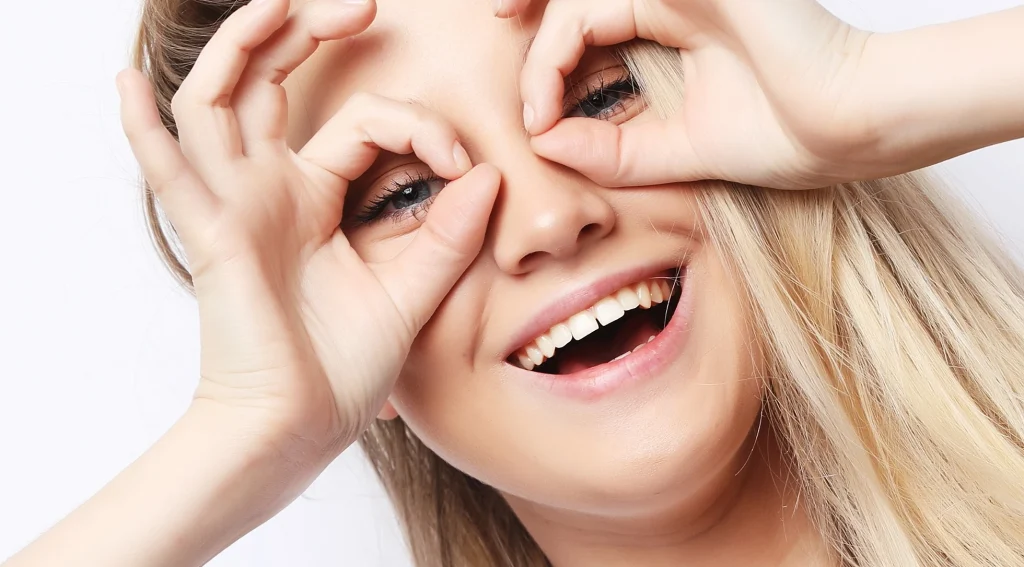
We usually recommend whitening your teeth after braces, rather than before. This is because the bleaching products may interfere with the bonding of braces or attachments in aligner treatment. The bleaching results are also generally more noticeable after the orthodontic treatment.
Aftercare

Once your braces are fitted, you’ll need to make small changes to your day-to-day behaviour. Here are some of the habits you can start the day after your appointment.
- Keep pain relief handy. You may experience some discomfort for up to a week as you adjust to your new braces. If necessary, take some over-the-counter pain relief like Paracetamol (e.g. Panadol/Tylenol) or Ibuprofen (e.g. Nurofen/Advil).
- Eat soft foods. You will most likely prefer to eat soft foods during the weeklong adjustment period. Bananas, soups, rice and pastas are all great options.
- Brush your teeth after eating. Keeping food out of your braces can be tricky, but try to start brushing your teeth after every meal. Get a soft travel toothbrush and pop it in your bag so you’ll always have it on you.
- Clean between your teeth with superfloss or braces floss picks and inter-dental brushes. Waterpik’s is a high-powered water jet to dislodge the food and plaque between the teeth. However this requires additional cost and can get quite messy.
When do you start seeing changes with braces?

You may notice a difference in your smile after four weeks, but generally, it takes two to three months for braces to begin noticeably straightening your teeth. As with all orthodontic treatment, every person’s bite and circumstances are different – meaning the time it takes for braces to start visibly aligning your teeth will differ as well. People with slightly crooked teeth or had tooth extractions will probably notice a difference sooner than those with severe malocclusion.
Clear Aligner Tips and Care
How do I clean my aligners?
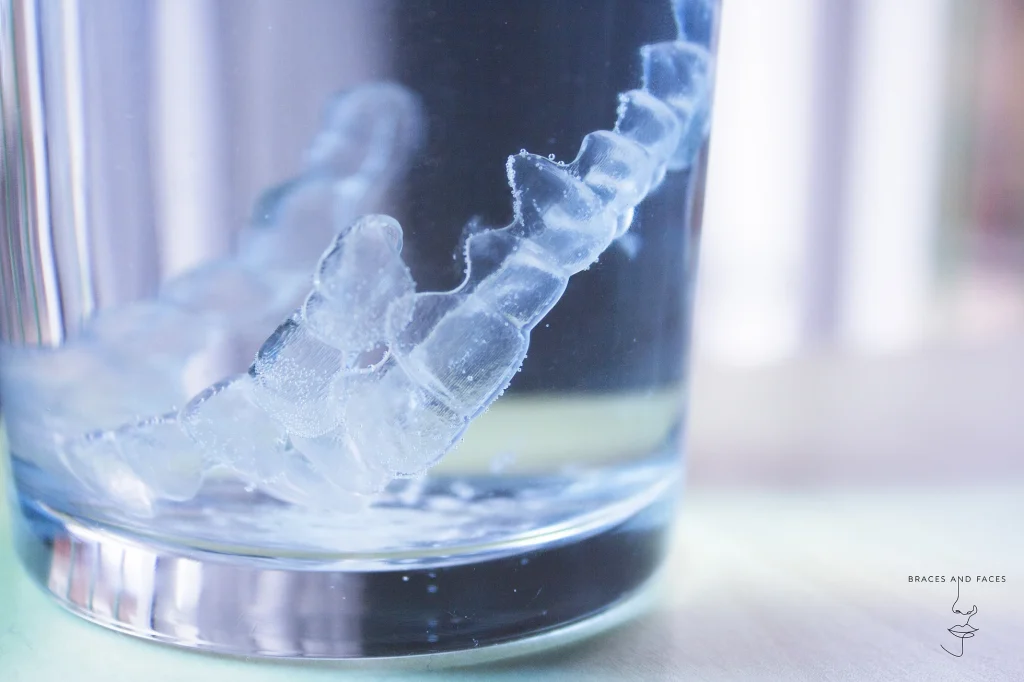
The best way to keep them clean is to brush your aligners at least twice a day with plain water. Some patients prefer to use toothpaste or soapy water.
Soaking them in mouthwash or denture tables is usually not necessary but does no harm.
Please note you will be switching them every 7 days so they may not have the time to discolour before moving into a new tray.
Can I see my final result?
One benefit of digital treatment plans is that we can project the final result based on the treatment goals. This simulation can be shared and discussed with you at any time in the office or remotely.
Although we cannot guarantee your final result will look exactly like the simulation, it gives our patients an idea of our treatment goals and potential limitations.
What are chewies?
They are small cylinders made of a soft spongy plastic that is used to improve the fit of aligners.
They should be used after every time you place your aligners in or approximately 5-10 minutes / day. Position the chewie between your teeth (either ‘longways’ or ‘shortways’ and bite down. Move it from one end of your mouth to the other continuing to bite up and down until you have bitten on it with all of your teeth.


How to use chewies?
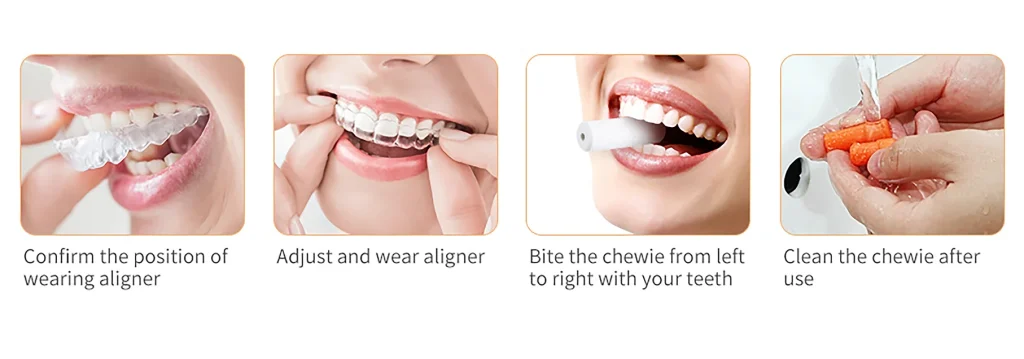
What are attachments?
Attachments are tooth-coloured structures that are placed on your teeth to help aligners move your teeth more effectively. They act like small temporary grips, and made of composite resin material – the same material used for dental fillings. We can place attachments behind the teeth when aesthetics are important and generally avoid placing attachments on any implants or crowns. Attachments are usually placed two weeks after the start of your treatment and is a painless process.

What is IPR (Interproximal reduction)?
When there is crowding or when teeth are slanted forward, we may recommend IPR to help create small amounts of space. It’s a simple and very direct way of creating space around the front teeth.
It is a very common procedure done simply in the clinic and takes around 5 minutes or less. It feels a little like “flossing with sandpaper”. Most of the time, the spaces are so small they are hardly visible to the naked eye. Long term research shows it does not cause sensitivity or affect the health the prognosis of the teeth.
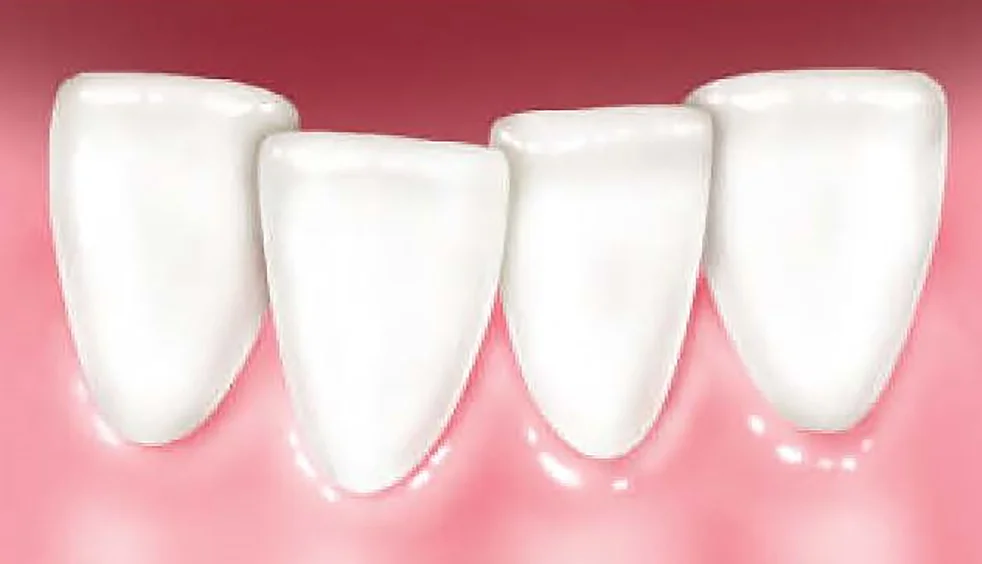
Prior to interproximal reduction, teeth slightly overlap.
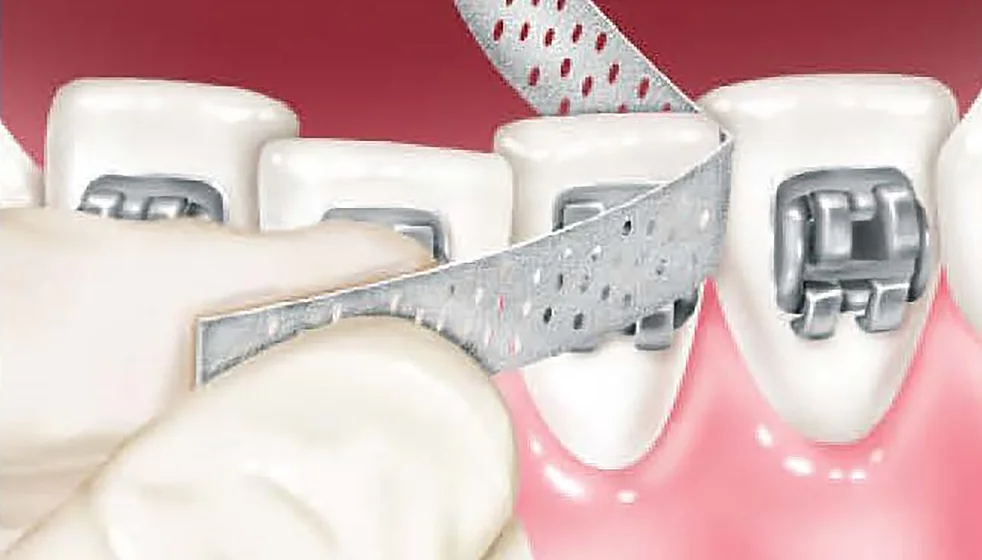
After wires are removed, the orthodontist gains some space by gently contouring the sides of the overlapping teeth.

Photo courtesy of American Association of Orthodontists.
Following interproximal reduction, teeth have sufficient room to align, the patient has a more aesthetically-pleasing smile and an improved bite.
Is there less pain if I wear clear aligners over traditional braces?
Overall, patients will find clear aligners more comfortable over metal braces as there are no wires and brackets rubbing against the cheeks and lips. The movement in aligners is programmed to be gradual and targeted but are much more effective if worn 20-22 hours/day. However, clear aligners require commitment and can be quite troublesome to some.

Can I wear elastics with aligners?
Yes – aligners can have pre-cut hooks where you can attach rubber bands to. Additionally, we will place a metal hook on your tooth where the elastic band stretches to for ease of placement rather than the plastic being distorted.


What happens if my aligner breaks before I’ve worn it for 7 days or I’ve lost a set?
Please jump to the next aligner and wear it for a few more days. Feel free to Whatsapp us a photo of your teeth with and without aligners on if you have concerns regarding the aligner fit. Frequent breakage or loss of aligners will lead to “off tracking” and will require ordering new sets, which will slow treatment down and may incur additional costs.
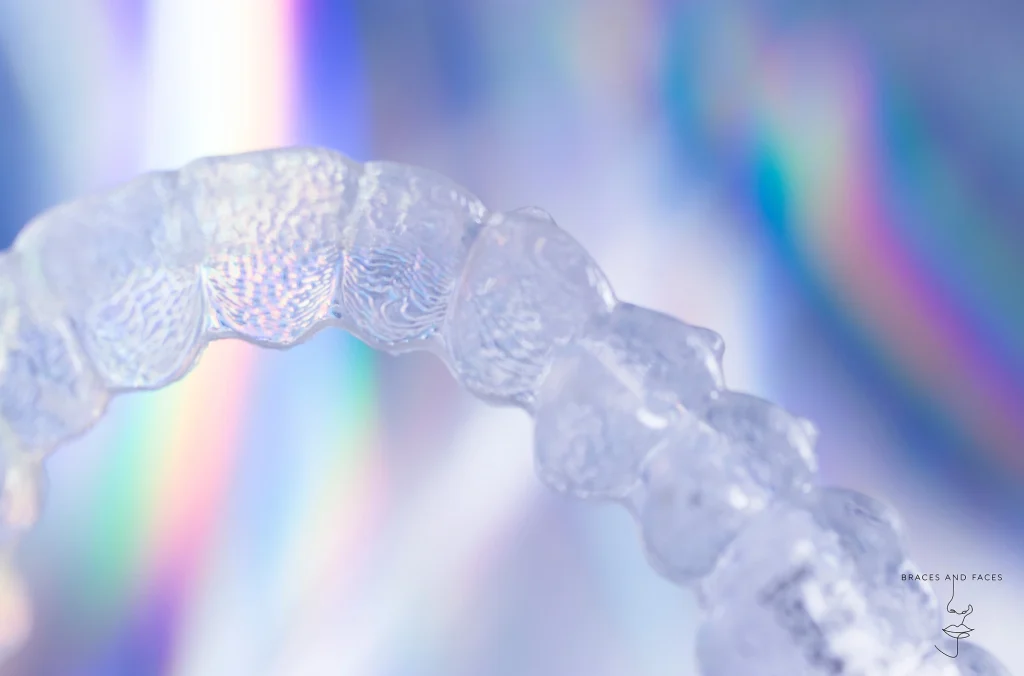
I see a large gap (>3mm) between my tooth and aligner? Is that normal?
When you first fit your aligners at your initial appointment, the aligners should fit as snug as possible meaning they wrap around your entire tooth. Over the course of treatment, because of either the aligner has not been worn enough or not properly put on – the aligner can start to “lose track” of certain teeth meaning it is no longer wrapped around the tooth and cannot move the tooth as effectively.
At the initial stages this can be corrected by use of chewies in the particular area and staying in your last most fitted aligner for a few more days before switching into the next aligner to give the aligner time to get that tooth “back on track”.
Additionally sometimes it is simply a difficult movement for the aligner along with the shape of the tooth being hard to grip, you may find the gap frequently in the same spot. If you are unsure, we welcome you to send us a picture of you wearing the aligners as the first point of contact so that we can instruct you on what to do. If necessary, we may schedule an appointment to come into the clinic for a new scan.

What is a refinement scan?
Your Invisalign treatment may span over the period of months to years. The total number of aligners in your initial set is not necessarily directly related to your treatment time. We often describe it as “tailoring a dress”. We do it in stages, and may scan your teeth when we feel it is necessary or when you have finished wearing all your aligners in the batch. When we perform a refinement scan, this just means we want to update Invisalign and tell them specifically what areas to focus on to provide you with more effective treatment. The refinement scan is then sent to Invisalign and there is a 2 to 3 week processing time required until the new batch of aligners come back. In the mean time, we will ask patients to stay on their last aligner and wear it 12 hours a day to maintain their position until the new set arrives, then go back to a 7 day cycle.

Why do I notice more visible staining on the attachments while I’m wearing my Invisalign?

The attachments are made of composite resin and is stable and does not discolour easily.
However there are a lot of reasons that can cause staining:
- Irregular surface on the tooth or attachment
- Coloured beverages such as soda, coffee, wine, black tea
- Smoking
- Turmeric
- Inadequate cleaning of aligners after eating
- Poor oral hygiene
- Bonding agent used in the dental procedure
We can help remove the stains around the attachment during your regular orthodontic reviews or cleaning appointments. We may suggest replacing the attachments if the staining is severe.

